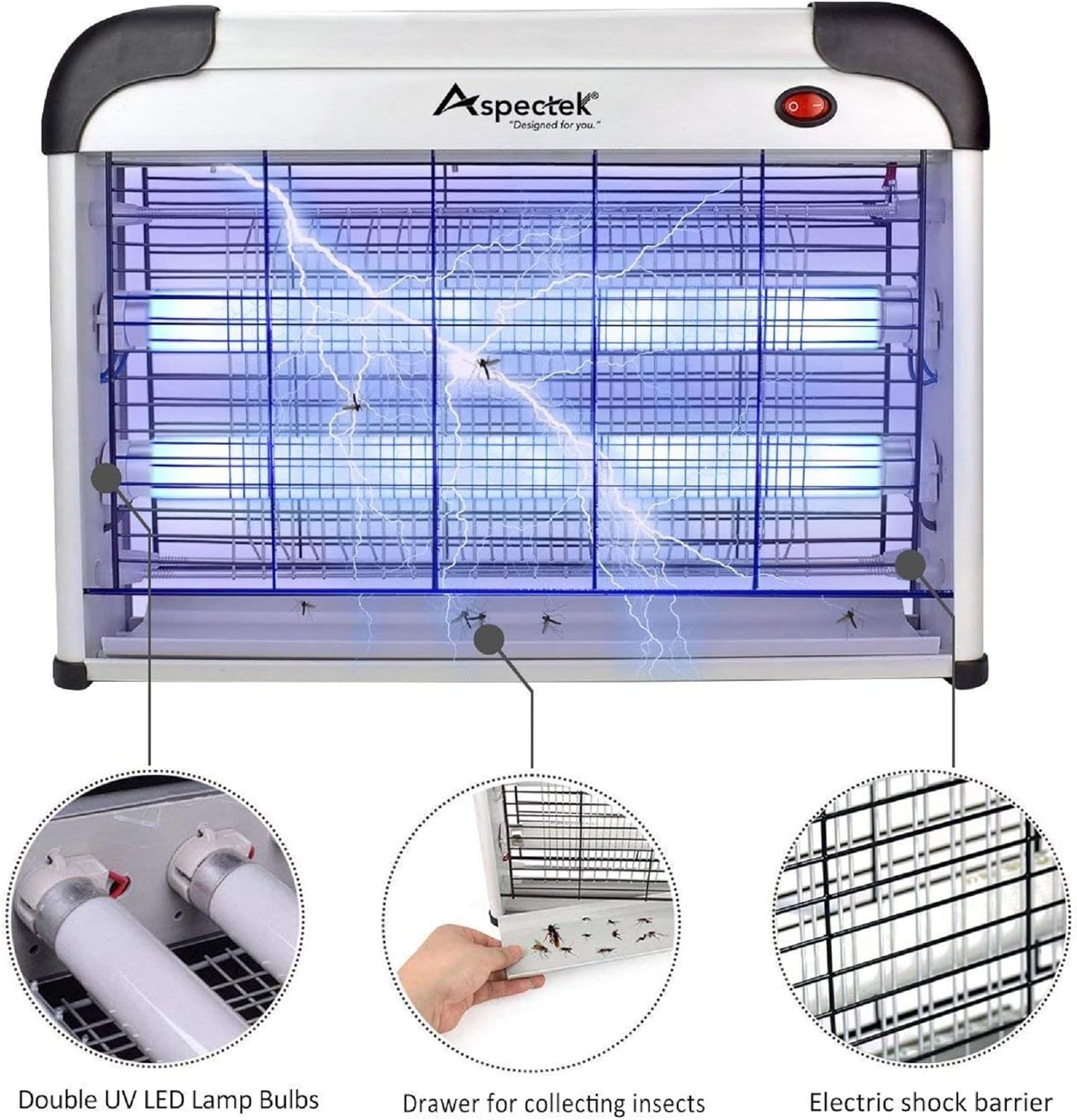

 The earliest flyswatters had been actually nothing greater than some sort of placing floor hooked up to the top of a long stick. An early patent on a business flyswatter was issued in 1900 to Robert R. Montgomery who known as it a fly-killer. Montgomery offered his patent to John L. Bennett, a rich inventor and industrialist who made further enhancements on the design. The origin of the title “flyswatter” comes from Dr. Samuel Crumbine, a member of the Kansas board of health, insect zapper who wished to raise public consciousness of the health issues brought on by flies. He was inspired by a chant at an area Topeka softball game: “swat the ball”. In a well being bulletin printed soon afterwards, he exhorted Kansans to “swat the fly”. In response, a schoolteacher named Frank H. Rose created the “fly bat”, a machine consisting of a yardstick attached to a piece of display, which Crumbine named “the flyswatter”. The fly gun (or flygun), a derivative of the flyswatter, uses a spring-loaded plastic projectile to mechanically “swat” flies.
The earliest flyswatters had been actually nothing greater than some sort of placing floor hooked up to the top of a long stick. An early patent on a business flyswatter was issued in 1900 to Robert R. Montgomery who known as it a fly-killer. Montgomery offered his patent to John L. Bennett, a rich inventor and industrialist who made further enhancements on the design. The origin of the title “flyswatter” comes from Dr. Samuel Crumbine, a member of the Kansas board of health, insect zapper who wished to raise public consciousness of the health issues brought on by flies. He was inspired by a chant at an area Topeka softball game: “swat the ball”. In a well being bulletin printed soon afterwards, he exhorted Kansans to “swat the fly”. In response, a schoolteacher named Frank H. Rose created the “fly bat”, a machine consisting of a yardstick attached to a piece of display, which Crumbine named “the flyswatter”. The fly gun (or flygun), a derivative of the flyswatter, uses a spring-loaded plastic projectile to mechanically “swat” flies.
Mounted on the projectile is a perforated circular disk, which, based on promoting copy, “will not splat the fly”. Several comparable products are offered, principally as toys or novelty gadgets, Zap Zone Defender Testimonial though some maintain their use as conventional fly swatters. Another gun-like design consists of a pair of mesh sheets spring loaded to “clap” collectively when a set off is pulled, squashing the fly between them. In contrast to the standard flyswatter, such a design can solely be used on an insect in mid-air. A fly bottle or glass flytrap is a passive lure for chemical-free bug control flying insects. In the Far East, it’s a big bottle of clear glass with a black metal high with a hole within the middle. An odorous bait, equivalent to items of meat, is positioned in the bottom of the bottle. Flies enter the bottle in quest of meals and are then unable to flee because their phototaxis conduct leads them anyplace in the bottle except to the darker top the place the entry gap is.
A European fly bottle is more conical, with small toes that elevate it to 1.25 cm (0.5 in), with a trough a few 2.5 cm (1 in) extensive and deep that runs contained in the bottle all around the central opening at the bottom of the container. In use, the bottle is stood on a plate and a few sugar is sprinkled on the plate to attract flies, who finally fly up into the bottle. The trough is stuffed with beer or insect zapper vinegar, Zap Zone Defender USA into which the flies fall and drown. Previously, the trough was typically filled with a harmful mixture of milk, water, and arsenic or mercury chloride. Variants of those bottles are the agricultural fly traps used to combat the Mediterranean fruit fly and the olive fly, which have been in use since the thirties. They are smaller, with out feet, and insect zapper the glass is thicker for tough out of doors usage, usually involving suspension in a tree or bush. Modern variations of this device are often fabricated from plastic, and can be bought in some hardware shops.
